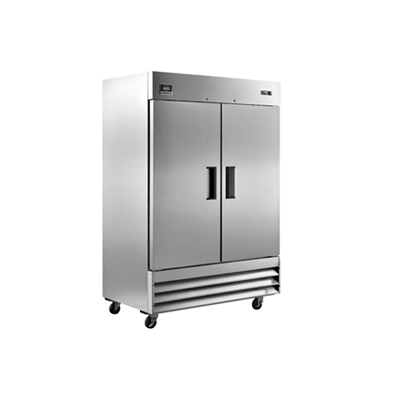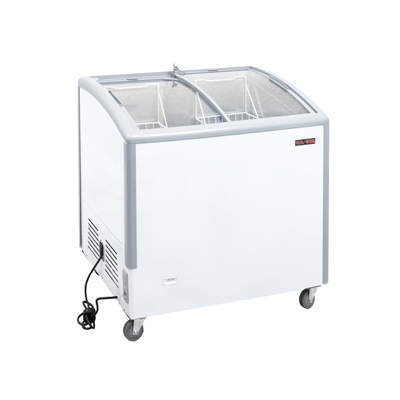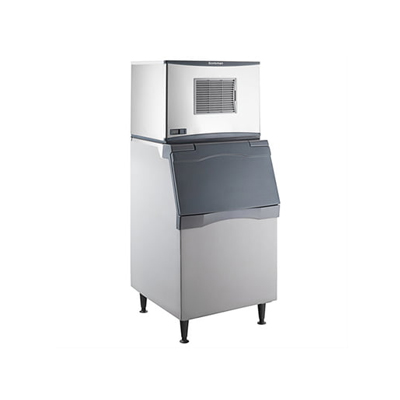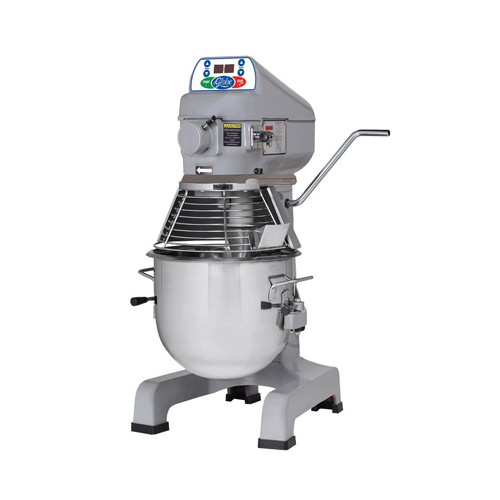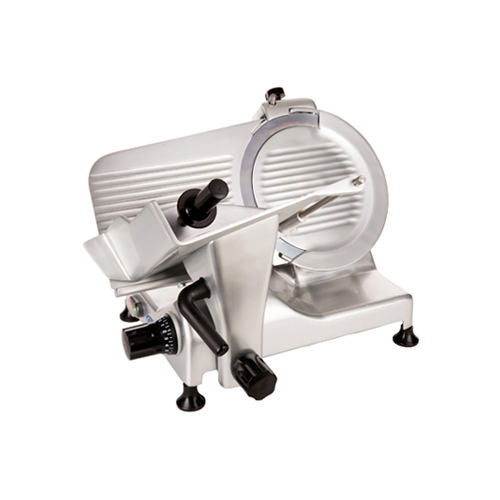Commercial Fridge: Expert Solutions for Canadian Restaurants
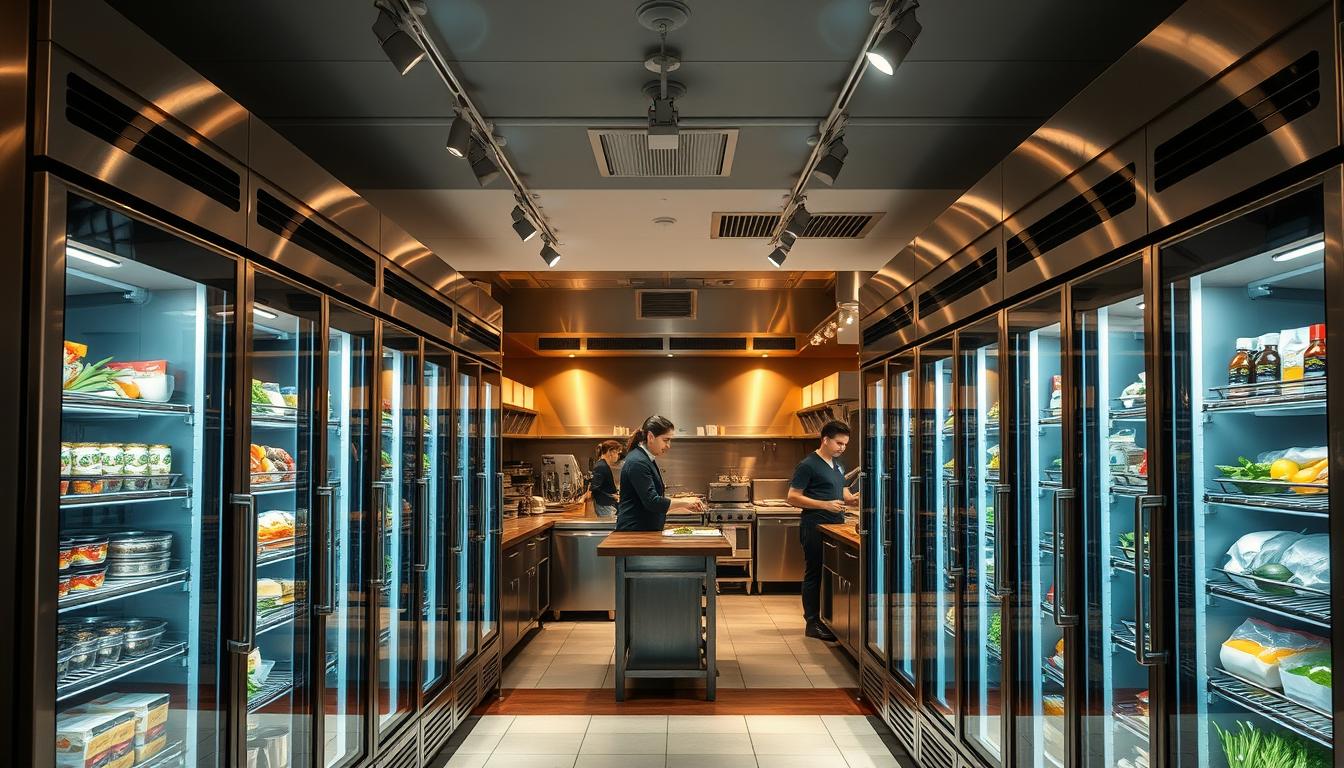
Did you know that commercial refrigeration systems account for up to 30% of a restaurant’s energy consumption? For Canadian restaurants, where energy efficiency is both an environmental and financial priority, choosing the right refrigerator and freezer equipment is crucial.
Restaurants rely on advanced refrigeration systems to maintain food safety and operational efficiency. However, with so many options available, selecting the right equipment can be overwhelming. That’s where expert advice comes into play. This guide is designed to simplify your decision-making process, offering trusted recommendations and insights tailored to your needs.
Whether you’re running a small café or a large dining establishment, a reliable refrigerator and freezer system is the backbone of your operation. In this article, we’ll explore key features, compare top models, and discuss the latest technological advancements in commercial refrigeration. Our goal is to provide you with practical tips and actionable advice to ensure your restaurant runs smoothly and efficiently.
Overview of Commercial Refrigeration in the Canadian Market
Canada’s commercial refrigeration market is thriving, driven by the growing demand for efficient and sustainable solutions. As restaurants and food service establishments aim to reduce their environmental footprint, the adoption of advanced refrigeration systems has become a priority.
Recent data from industry leaders like Home Depot and Vortex highlights a steady growth in the adoption of energy-efficient refrigeration technologies. These advancements not only align with Canada’s environmental goals but also help businesses cut down on operational costs.
Restaurants, in particular, rely heavily on robust refrigeration systems to maintain food safety and quality. With the increasing focus on food preservation and safety regulations, modern commercial refrigeration equipment has become indispensable. Whether it’s preserving fresh ingredients or maintaining the perfect temperature for beverages, these systems play a critical role in daily operations.
Moreover, the integration of ice-making components in commercial refrigeration units has become crucial for both food and beverage preservation. This dual functionality not only enhances operational efficiency but also supports the growing demand for fresh and high-quality food products in Canadian restaurants.
For restaurant owners looking to upgrade their equipment, understanding the latest market trends and technological advancements is essential. By staying informed, businesses can make smarter decisions that align with their operational needs and budget constraints. For more guidance on selecting the right commercial refrigeration equipment, visit this resource to explore tailored solutions.
Benefits of a Commercial Fridge for Business Efficiency
Modern refrigeration systems are more than just essential equipment for restaurants—they are key drivers of operational efficiency and profitability. By investing in the right refrigeration solutions, Canadian restaurant owners can streamline their operations, reduce costs, and enhance food quality.
Improved Food Safety and Preservation
One of the most critical advantages of advanced refrigeration systems is their ability to maintain precise temperature control. This ensures that perishable ingredients stay fresh longer, reducing the risk of spoilage. Energy-efficient models also feature advanced humidity control, preserving the texture and flavor of food. For example, units with smart sensors can automatically adjust settings to maintain optimal conditions, even during peak usage.
Additionally, modern systems are designed to meet strict food safety regulations. Features like rapid cooling and consistent temperature maintenance help prevent bacterial growth, ensuring compliance with Health Canada guidelines. This not only protects your business reputation but also reduces the risk of foodborne illnesses.
Cost Savings and Operational Impact
Energy-efficient refrigeration systems offer significant cost savings over time. For instance, ENERGY STAR certified commercial refrigerators can reduce utility bills by up to $45 annually. Over their lifetime, these units can save businesses approximately $440, making them a smart long-term investment.
| Feature | Standard Models | Energy-Efficient Models |
|---|---|---|
| Annual Energy Consumption | Higher | Lower by up to 40% |
| Utility Bill Savings | Minimal | $45-$100+ annually |
| Lifespan | Average (6-7 years) | Extended (up to 8 years) |
These savings, combined with reduced food waste, create a powerful combination that enhances your restaurant’s bottom line. Plus, many energy-efficient models qualify for government incentives, further offsetting initial costs.
By upgrading to modern refrigeration systems, Canadian restaurants can enjoy smoother operations, reduced expenses, and improved food quality. These benefits make advanced commercial refrigeration a cornerstone of business efficiency.
Key Features and Specifications to Consider
When selecting a refrigerator or freezer for your Canadian restaurant, it’s essential to focus on features that enhance performance and efficiency. The right specifications can make a significant difference in your daily operations and long-term costs.
Capacity and Size Requirements
Matching the equipment’s capacity to your restaurant’s needs is crucial. A unit that’s too small may struggle to keep up with demand, while an oversized one can waste energy. Consider your menu size and how much storage you need. For high-volume operations, pass-through refrigerators or multiple reach-in units might be ideal. For smaller spaces, undercounter models can save floor space without compromising functionality.
Energy Efficiency and Compliance
Energy efficiency is a top priority for Canadian restaurants. Look for ENERGY STAR certified equipment, which uses up to 20% less energy than standard models. These units not only reduce utility bills but also align with Canada’s environmental goals. Additionally, ensure your equipment meets Health Canada’s food safety regulations, maintaining temperatures below 4°C for perishables. Proper door design and insulation are key to maintaining efficiency and reducing energy consumption. For more guidance, visit this resource to explore tailored solutions.
Comparing Different Types of Commercial Refrigeration Equipment
Choosing the right refrigeration equipment is vital for Canadian restaurants. With various options available, understanding their pros and cons can help you make an informed decision.
Reach-In vs. Undercounter Units
Reach-in refrigerators are ideal for high-volume restaurants due to their large storage capacity. They often feature multiple shelves, making food organization easy. However, they occupy more floor space and may have higher energy consumption.
Undercounter units, on the other hand, are perfect for saving space. They fit neatly under countertops, ideal for small kitchens. While they offer less storage, their energy efficiency and space-saving design make them a practical choice for specific needs.
Walk-In Coolers and Freezers
Walk-in coolers and freezers are essential for restaurants with bulk storage needs. They provide ample space for large quantities of ingredients, perfect for high-demand environments. However, they require significant space and higher installation costs.
| Equipment Type | Reach-In | Undercounter | Walk-In |
|---|---|---|---|
| Storage Capacity | Large | Compact | Extensive |
| Energy Efficiency | Moderate | High | Varies |
| Best For | High-volume restaurants | Small kitchens | Bulk storage needs |
Integrated ice systems in refrigeration units can streamline operations, especially in busy restaurants. Consider your specific needs and space constraints when selecting equipment.

Assessing Your Restaurant’s Refrigeration Needs
To ensure your restaurant runs smoothly, it’s crucial to assess your specific refrigeration needs. A tailored approach ensures you select equipment that fits your unique requirements, enhancing efficiency and reducing costs.
Evaluating Space and Usage Demands
Start by evaluating your kitchen layout and workflow. Consider the physical space available and how staff move within it. Measure your current equipment to understand if it’s the right size or if adjustments are needed.
Next, assess your usage patterns. How much food do you store daily? What’s the volume of dishes you prepare? These factors help determine the necessary capacity. For example, a large menu with diverse ingredients may require more storage space.
Consider future growth. Will your restaurant expand or add new menu items? Choosing scalable equipment now can save costs later. Also, think about integrating new units with existing systems for a seamless operation.
Create a checklist to guide your evaluation. Include current and future equipment needs, operational tempo, and service style. This helps in making informed decisions that align with your restaurant’s specific demands.
A well-planned approach ensures your refrigeration equipment meets your needs effectively, leading to efficient operations and long-term cost savings. By focusing on these factors, you can create a system that supports your restaurant’s success.
Exploring Refrigeration Technologies and Innovations
The future of restaurant refrigeration lies in cutting-edge technology and smart innovations. Modern refrigeration systems are now equipped with advanced digital controls and smart monitoring features, transforming how restaurants maintain food quality and operational efficiency.
Smart Monitoring and Digital Controls
One of the most significant advancements in commercial refrigeration is the integration of IoT (Internet of Things) technology. Smart sensors and digital controls allow for real-time monitoring of temperature, humidity, and energy usage. These systems can send alerts to restaurant owners if temperatures deviate from safe levels, preventing food spoilage and ensuring compliance with Health Canada guidelines.
For example, some advanced freezer and cooler units now come with touchscreen interfaces and remote monitoring capabilities. This means you can check the status of your refrigeration system from a smartphone, making it easier to manage maintenance and energy efficiency.
Latest Technological Advances
Energy efficiency has become a top priority in restaurant refrigeration. New technologies like variable-speed compressors and smart defrost systems are reducing energy consumption while maintaining optimal performance. Additionally, eco-friendly refrigerants like R-290 (propane) are gaining popularity due to their lower environmental impact.
These advancements not only improve the functionality of your equipment but also contribute to long-term cost savings. By embracing these innovations, Canadian restaurants can enhance their operational efficiency while supporting sustainability goals.

Installation and Setup Best Practices
Proper installation is the first step toward ensuring your refrigeration system runs efficiently. A well-executed setup ensures optimal performance, safety, and longevity of your equipment.
Site Preparation Essentials
Before installation, ensure your site is ready. Clear the area of obstacles and ensure the floor is level and sturdy. Proper ventilation is crucial for your refrigerator and freezer units to function efficiently. Leave adequate space around the equipment for maintenance access.
Professional Installation Tips
Hiring a professional is highly recommended. They will handle complex tasks like electrical connections and ensure compliance with local codes. DIY installation is possible for small units but can lead to issues if not done correctly.
After installation, conduct a final check. Verify that doors close properly and the unit is level. Refer to the manufacturer’s guidelines for any specific instructions.
By following these steps, you’ll ensure a seamless installation process, setting your restaurant up for long-term success.
Maintenance and Repair of Commercial Refrigeration Systems
Regular maintenance is essential to keep your refrigeration systems running smoothly and efficiently. A well-maintained system not only prevents unexpected breakdowns but also ensures food safety and operational consistency.
Routine Maintenance Strategies
To keep your equipment in top shape, start with a routine maintenance schedule. Clean condenser coils regularly to improve energy efficiency and reduce the system’s workload. Inspect door seals to ensure they’re tight—simply insert a dollar bill; if it slides out easily, the seal may need replacing. Also, check refrigerant levels and ensure proper airflow around the unit. Scheduling professional inspections at least twice a year can help catch potential issues before they escalate.
Troubleshooting Common Issues
Common problems like temperature fluctuations or excessive ice buildup can often be resolved with simple checks. Ensure thermostats are accurate and that your freezer is well-stocked to maintain stable temperatures. If you notice ice buildup, defrost the unit promptly. For more complex issues, keep service records handy and consider automated monitoring systems for real-time insights.

By staying proactive with maintenance, you’ll safeguard your equipment’s performance, reduce energy costs, and ensure your restaurant operates without interruptions. Regular care not only extends the lifespan of your refrigeration systems but also protects your investment in food quality and customer satisfaction.
Ensuring Food Safety and Regulatory Compliance
Food safety is the cornerstone of any successful restaurant, and proper refrigeration plays a vital role in maintaining it. Health Canada guidelines set clear standards to protect consumers and ensure food quality. By adhering to these regulations, you not only safeguard your customers but also build trust and avoid costly penalties.
Adhering to Health Canada Guidelines
Health Canada requires that all perishable food items be stored at temperatures below 4°C (39°F) to prevent bacterial growth. This is where your refrigerator and freezer units become essential tools. Consistent temperature control ensures that food remains safe for consumption and maintains its quality.
Regular maintenance is crucial. Check the door seals on your refrigeration units to prevent cold air from escaping. A simple test: place a dollar bill in the door. If it slides out easily, the seal may need replacing. Additionally, keep your units clean and well-organized to prevent cross-contamination.
Health Canada also emphasizes the importance of record-keeping. Maintain logs of your storage temperatures and cleaning schedules. These records can be vital during inspections and help demonstrate your commitment to food safety.
For example, many Canadian restaurants use smart sensors in their refrigeration systems. These devices alert staff if temperatures rise above safe levels, preventing potential hazards. Such proactive measures not only meet regulations but also enhance operational efficiency.
By following these guidelines, you create a safe environment for your customers and protect your restaurant’s reputation. Remember, food safety is non-negotiable—it’s essential for operational success and customer trust.
Enhancing Energy Efficiency and Reducing Operational Costs
Enhancing energy efficiency in your refrigeration systems can significantly reduce operational costs while supporting sustainability goals. Modern refrigeration systems incorporate advanced features designed to minimize energy consumption without compromising performance.
Energy Saving Features
One of the most notable advancements in refrigeration technology is the use of smart sensors and variable-speed compressors. These components adjust energy usage based on demand, ensuring that your equipment operates efficiently. For instance, smart sensors can monitor temperature levels and adjust cooling cycles, reducing unnecessary energy draw. Additionally, eco-friendly refrigerants like R-290 (propane) are gaining popularity due to their lower environmental impact and energy efficiency.
Long-Term Cost Benefits
Investing in energy-efficient coolers and freezers offers substantial long-term savings. According to industry studies, energy-efficient models can reduce energy consumption by up to 30% compared to traditional units. This not only lowers utility bills but also extends the lifespan of your equipment by up to 25%. Furthermore, many energy-efficient models qualify for government incentives, further offsetting initial costs.
| Feature | Traditional Models | Energy-Efficient Models |
|---|---|---|
| Energy Consumption | Higher | Reduced by up to 30% |
| Annual Cost Savings | Minimal | $100-$300+ |
| Lifespan | Average (6-7 years) | Extended (up to 8 years) |
As Health Canada emphasizes, maintaining optimal refrigeration temperatures is crucial for food safety. Energy-efficient systems ensure consistent temperature control, reducing the risk of spoilage and bacterial growth. This not only protects your business reputation but also aligns with environmental goals.
By upgrading to modern, energy-efficient refrigeration systems, Canadian restaurants can enjoy reduced operational costs, enhanced efficiency, and a smaller environmental footprint. For more guidance on selecting the right energy-efficient equipment, visit this resource to explore tailored solutions.
Adapting Refrigeration Solutions for Diverse Restaurant Formats
Restaurants come in all shapes and sizes, and their refrigeration needs vary just as much. Whether you’re running a fine dining establishment, a casual eatery, or a food truck, the right refrigeration equipment is essential for maintaining food quality and operational efficiency.
Fine Dining and Casual Eateries
Fine dining restaurants often require precise temperature control to preserve delicate ingredients. Reach-in refrigerators with advanced humidity settings are ideal for such environments, as they maintain the freshness of high-end ingredients. Casual eateries, on the other hand, benefit from undercounter units that save space while keeping essential items cool.
Food Trucks and Quick Service Models
For food trucks and quick-service restaurants, compact and mobile refrigeration solutions are a must. Mobile coolers and freezer units designed for tight spaces ensure food stays fresh during transit and service. These units are built to withstand the demands of a fast-paced environment while maintaining energy efficiency.
By tailoring your refrigeration equipment to your restaurant’s unique needs, you can enhance food quality, streamline operations, and improve customer satisfaction. Whether it’s a high-end dining experience or quick service, the right refrigeration setup strengthens your brand and keeps your kitchen running smoothly.
Integrating Digital Controls and IoT in Refrigeration
Imagine managing your restaurant’s refrigeration systems from your smartphone. IoT-enabled digital controls are transforming how Canadian restaurants maintain optimal temperatures and reduce energy costs. This innovative technology ensures your freezer and refrigerator units operate seamlessly, even when you’re not on site.
Remote Monitoring Technologies
IoT-enabled systems allow real-time monitoring of your refrigeration units. Receive alerts if temperatures rise or if a door is left open. This proactive approach prevents food spoilage and ensures compliance with Health Canada guidelines.
| Feature | Traditional Models | IoT-Enabled Models |
|---|---|---|
| Energy Consumption | Higher | Optimized |
| Maintenance | Manual Checks | Automated Alerts |
| Connectivity | None | Smartphone App |
Modern systems integrate with traditional freezers and refrigerators, enhancing performance. Improved door sensors and user-friendly interfaces make maintenance easier. By adopting these technologies, you future-proof your restaurant, ensuring efficiency and cost savings.

Leveraging Refrigeration to Maximize Food Quality
Advanced refrigeration systems are more than just tools for food storage—they are essential for preserving the freshness and quality of your ingredients. By maintaining precise temperature control, these systems help extend the shelf life of perishables, ensuring your dishes always meet high culinary standards.
Extending Shelf Life of Ingredients
Modern refrigerator units feature cutting-edge technology that maintains consistent temperatures, crucial for preventing spoilage. For example, smart sensors in commercial refrigeration systems can detect even slight temperature fluctuations, adjusting settings automatically to preserve food quality. This level of control not only extends the life of your ingredients but also maintains their natural flavors and textures.
| Feature | Traditional Models | Modern Systems |
|---|---|---|
| Temperature Control | Basic | Precise, Real-Time Adjustments |
| Shelf Life Extension | Standard | Extended by Up to 30% |
| Energy Efficiency | Lower | High, with Smart Sensors |
Integrated ice systems further enhance food preservation, keeping ingredients at optimal temperatures without over-freezing. This dual functionality is especially beneficial for restaurants handling fresh meats, dairy, and seafood. By investing in such advanced refrigeration solutions, you not only reduce waste but also elevate the quality of your food, directly impacting customer satisfaction and loyalty.
For more insights on selecting the right equipment to maximize ingredient quality, visit this resource to explore tailored solutions.
Trusted Equipment Sources and Financing Options
Investing in the right refrigeration equipment is crucial for your restaurant’s success. Trusted sources and flexible financing options can make this process easier and more affordable. Whether you’re looking for new or certified used equipment, finding a reliable supplier is key.
Certified Used Equipment Insights
Babak Food Equipment stands out as a trusted name in providing high-quality, certified used restaurant equipment. They offer a wide range of options, ensuring you find the perfect fit for your needs. Contact them directly at 604-566-9747 for personalized assistance.
Rent-Try-Buy and Financing Strategies
Financing strategies like Rent-Try-Buy allow you to test equipment before committing. This approach helps manage upfront costs and ensures the equipment meets your operational needs. Many models come with a 90-day parts-and-labor warranty, offering peace of mind.
| Feature | Traditional Purchase | Rent-Try-Buy |
|---|---|---|
| Initial Cost | Higher upfront | Lower initial investment |
| Flexibility | Fixed purchase | Test before commitment |
| Warranty | Typically 1 year | Includes 90-day warranty |
By choosing trusted sources and smart financing, you can enhance your restaurant’s efficiency without overspending. These strategies support long-term cost management and operational success.

Decision-Making Tips for Restaurant Owners
Choosing the right refrigeration equipment is a critical decision for any restaurant. It impacts everything from food quality to operational costs. To help you make an informed decision, here are some practical tips and strategies.
Budget and ROI Considerations
Start by evaluating your budget and calculating the ROI of energy-efficient equipment. Energy-efficient models may cost more upfront but can save you money in the long run. For example, an ENERGY STAR certified refrigerator can reduce your utility bills by up to $45 annually. Over time, these savings can offset the initial investment.
Consider the total cost of ownership, including maintenance, repairs, and energy consumption. Energy-efficient models often have lower operating costs and may qualify for government incentives, further reducing your expenses.
Selecting the Right Equipment
Your equipment selection should align with your restaurant’s unique needs. Consider the size of your kitchen, the type of food you serve, and your storage requirements. For example, a high-volume restaurant may benefit from a large capacity reach-in refrigerator, while a small café might prefer an undercounter unit.
Think about features like integrated ice systems, which can streamline your operations. Also, consider the door design and temperature management, as proper sealing and consistent temperatures are crucial for food safety and energy efficiency.
Finally, compare different ranges of products to find the best fit for your needs. A balanced review of functionality and cost efficiency will help you make a decision that supports your restaurant’s profitability.
- Provide practical budgeting tips for choosing refrigeration systems.
- Detail methods for calculating ROI on energy-efficient equipment.
- Explain how to align your equipment selection with your restaurant’s unique needs.
- Offer a checklist for evaluating both upfront costs and long-term benefits.
- Highlight the importance of comparing different ranges of products.
- Include advice on considering features such as integrated ice systems.
- Discuss the relevance of proper door and temperature management.
- Stress that the right refrigerator and freezer choices boost overall profitability.
- Encourage a balanced review of both functionality and cost efficiency.
- Empower restaurant owners with clear, step-by-step decision-making strategies.
By following these tips, you can make an informed, budget-friendly decision that enhances your restaurant’s efficiency and profitability. Remember, the right equipment is an investment in your business’s long-term success.
Conclusion
Investing in a modern refrigeration system is a smart move for any Canadian restaurant. It boosts efficiency, ensures food safety, and supports long-term cost savings. With advanced features like smart sensors and energy-efficient designs, these systems help maintain optimal temperatures and reduce energy consumption.
Trusted sources like Babak Food Equipment offer reliable solutions tailored to your needs. Whether you’re looking for new or certified used equipment, they provide options that fit your budget and operational requirements. Don’t forget to consider factors like installation, maintenance, and future growth when making your decision.
By choosing the right refrigerator and freezer, you can significantly cut costs and enhance your restaurant’s performance. Take action today—evaluate your needs, explore your options, and invest in equipment that will keep your food fresh and your business thriving. Your restaurant’s success starts with the right refrigeration system.


